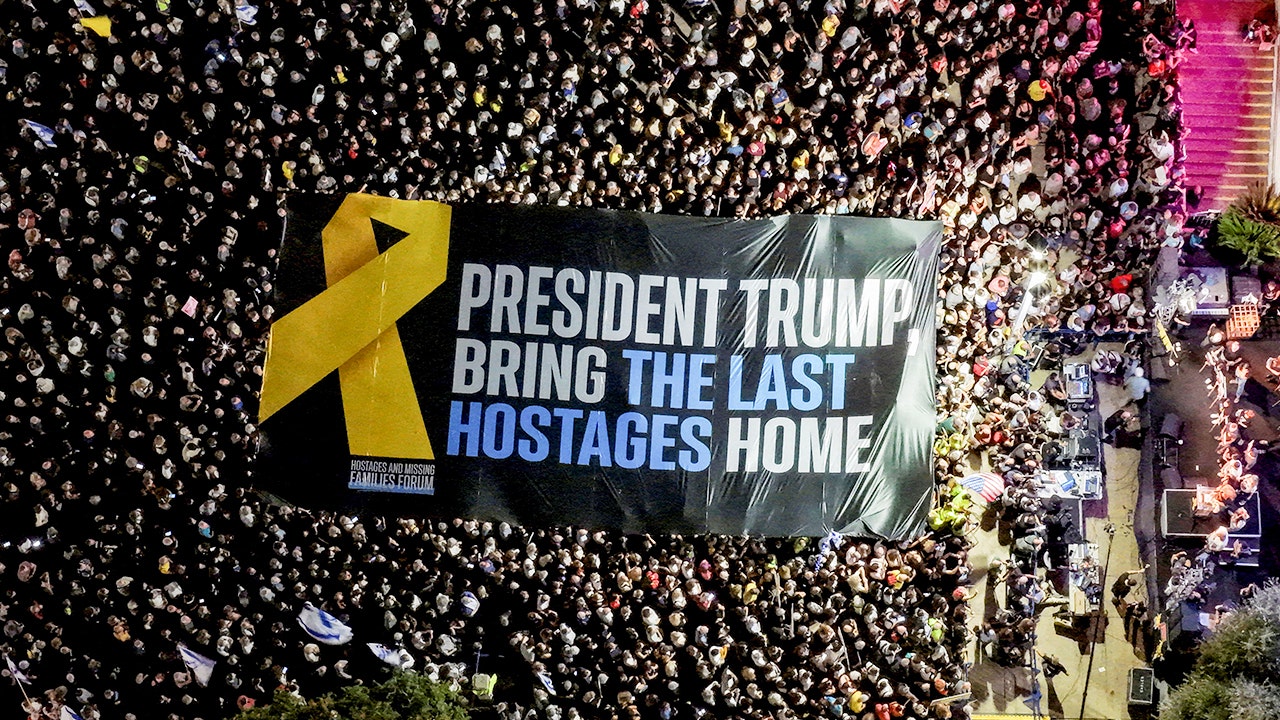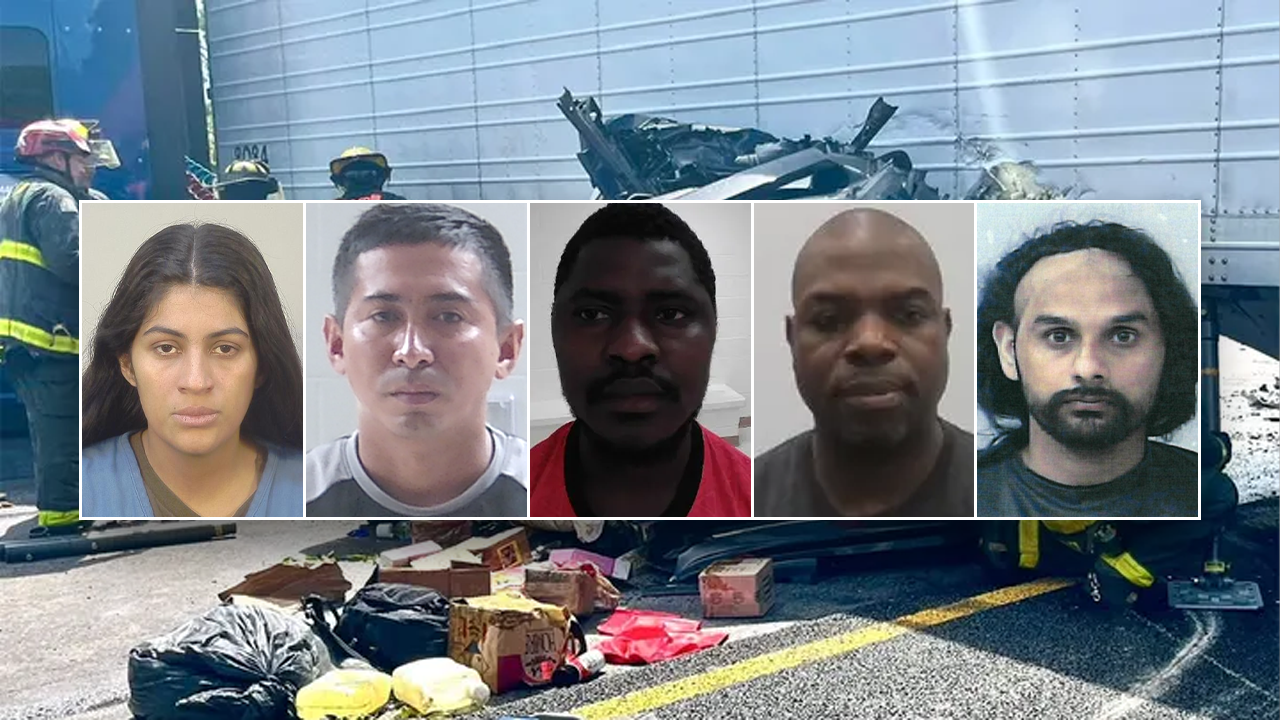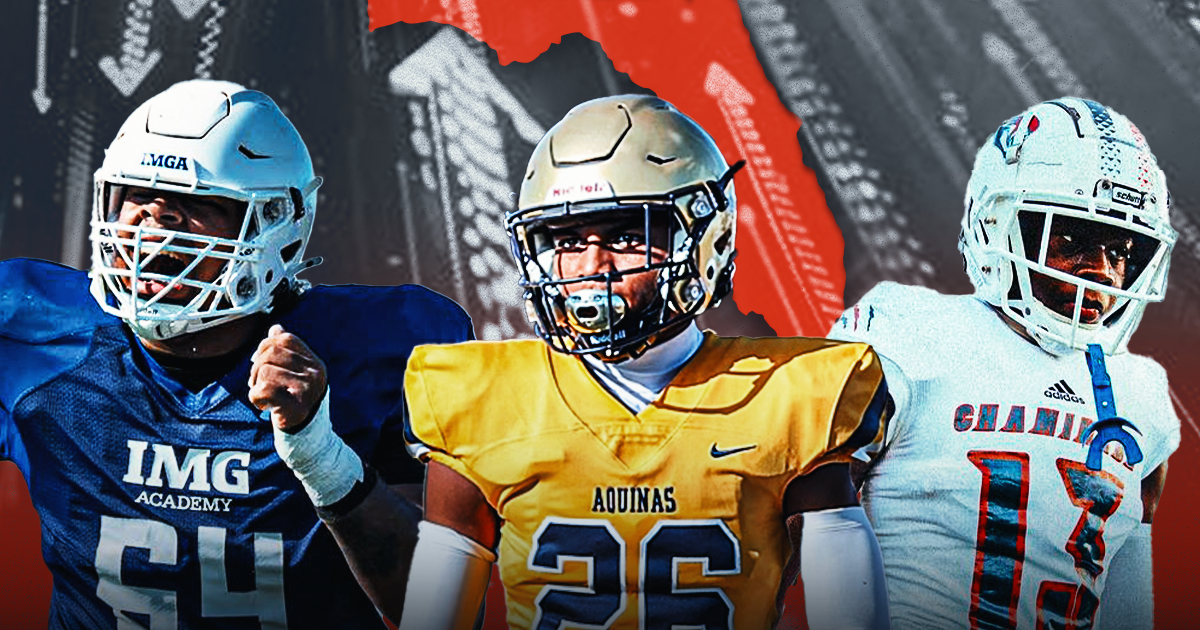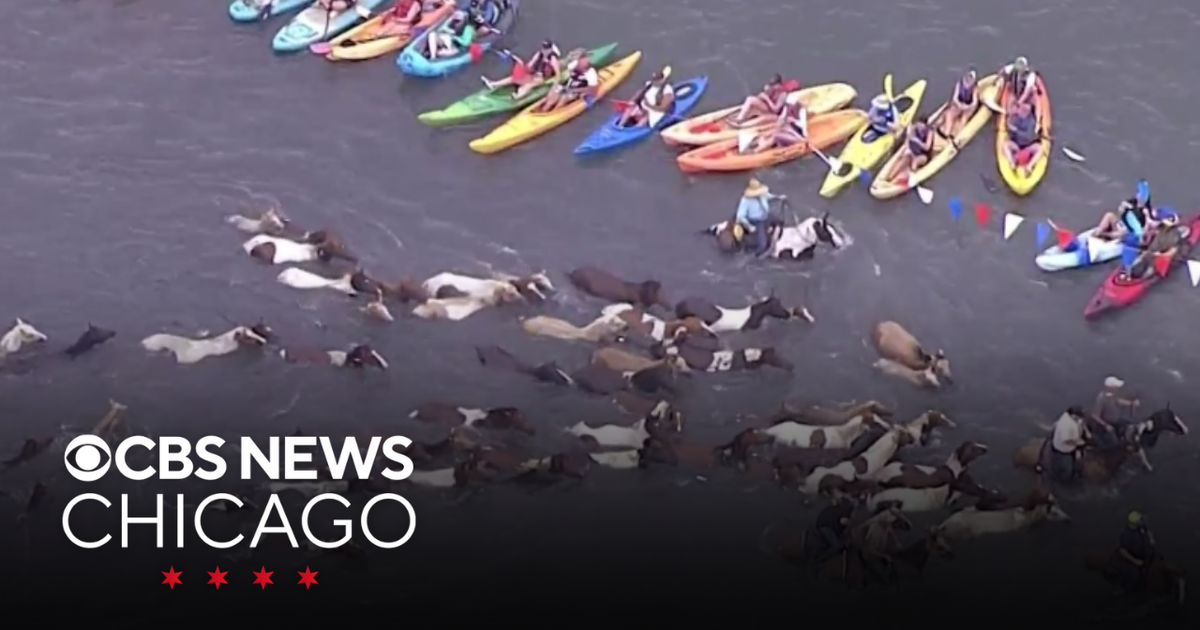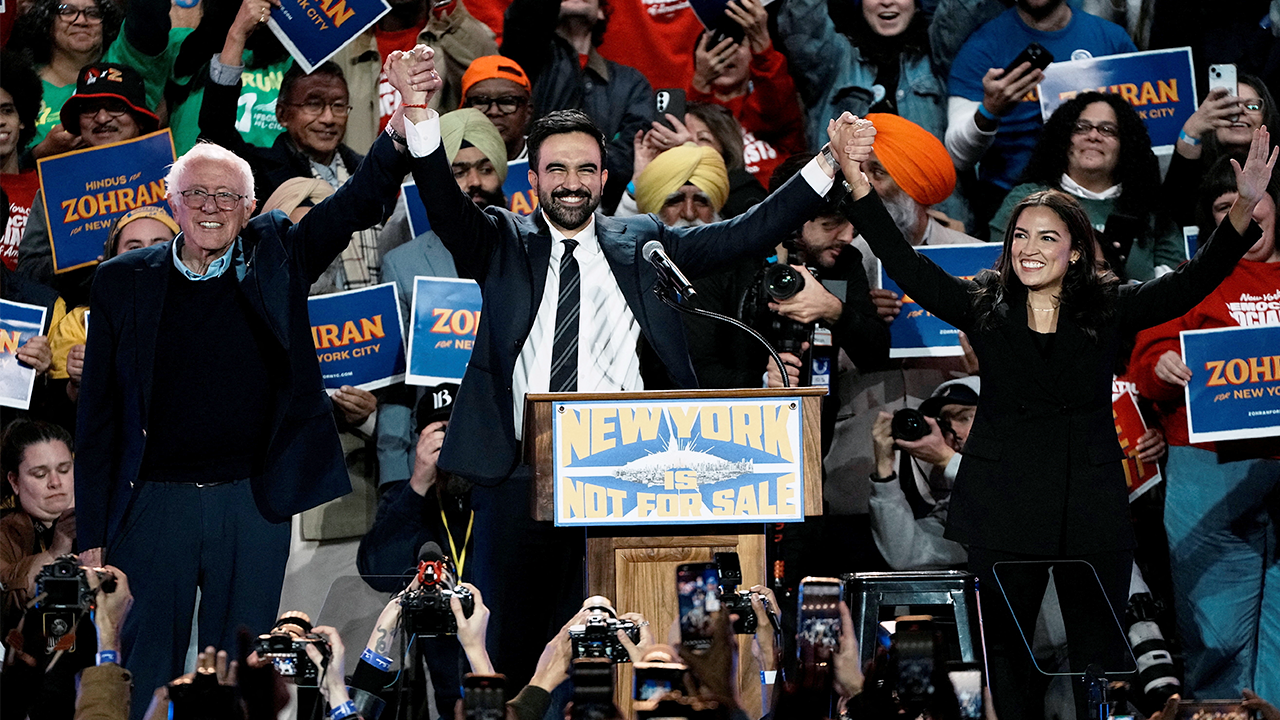Business
Staffing issues trigger temporary ground stop at LAX

Nearly four weeks into the federal government shutdown, a staffing shortage at Los Angeles International Airport prompted a temporary ground stop Sunday morning affecting flights at the West Coast’s largest and busiest airport.
The restriction began around 8:45 a.m., affecting departing flights for Oakland, and was lifted at 10:30 a.m., according to an FAA Air Traffic Control System Command Center advisory.
The stoppage affected most of Southern California, leaving passengers experiencing flight delays of around 49 minutes, with some waiting up to 87 minutes, according to KTLA.
Even after the resumption of flights, travelers were instructed to check the status of their flights.
Since the federal shutdown began Oct. 1, the Federal Aviation Administration has warned of disruption at airports due to staff shortages. Air traffic controllers are required to work unpaid when the federal government shuts down and do not obtain retroactive pay until Congress comes to an agreement on a budget.
Less than a week into the shutdown, dozens of flights were delayed and 12 flights were canceled as Hollywood Burbank Airport’s air traffic control tower was temporarily unstaffed due to shortages. Outgoing flights were delayed an average of two hours and 31 minutes.
Airports across the nation have experienced staff shortages at their air traffic control towers this month. On Sunday afternoon, the Federal Aviation Administration’s operations plan listed several major airports experiencing “staffing triggers,” from LAX to Ronald Reagan Washington National Airport in Virginia and Philadelphia International Airport in Pennsylvania.
U.S. Secretary of Transportation Sean Duffy said Sunday the problem is getting worse as more controllers, getting no paychecks, are calling in sick.
“I’ve been out talking to air traffic controllers and you can see the stress,” Duffy said on Fox News. “These are people that oftentimes live paycheck to paycheck or one controller has a stay-at-home spouse. They’re concerned about gas in the car, they’re concerned about child care and mortgages.”
On Saturday, 22 airports had staffing shortages, Duffy said.
“That’s one of the highest that we have seen in the system since the shutdown began,” he said. “And that’s a sign that the controllers are wearing thin.”
California Gov. Gavin Newsom’s press office was quick to seize on news of the problems at LAX and goad Duffy.
“Hell of a job, @SecDuffy,” Newsom’s office posted on X, sharing a news story about the LAX ground stop. “Can’t wait to see what you do with NASA.”
This is not the first time a federal shutdown has triggered national disruptions to flights.
In January 2019, a large number of air traffic controllers called in sick in New York City, prompting the Federal Aviation Administration to temporarily halt flights into LaGuardia Airport.
The chaos at LaGuardia — and subsequent news coverage of airport delays and threats to air safety — swiftly motivated politicians to come to an agreement. But this year, Republicans and Democrats in Washington seem deadlocked and no closer to a deal.

Business
Commentary: The NBA’s gambling scandal was utterly predictable — and other pro sports will be next

I may be revealing a secret cherished by columnists the world over, but I admit that among the columns we relish writing the most fall into the “I told you so” genre.
Case in point: In April last year, in a column about the gambling mess ensnaring Shohei Ohtani’s then-interpreter, I warned that the pro sports leagues’ enthusiastic embrace of betting would inevitably produce a major scandal.
“It might not surface in the next months or even years,” I wrote, “but it will happen.”
Get a big bet on Milwaukee tonight.
— Damon Jones’ alleged message to gamblers after learning that LeBron James would be sitting out a Lakers-Bucks game
The calendar, as it turned out, ticked over at 19 months. Last Thursday, federal prosecutors charged National Basketball Assn. player Terry Rozier and former NBA player and assistant coach Damon Jones with fraud and money laundering in connection with a scheme to fix bets on NBA games. Portland Trail Blazers head coach Chauncey Billups was charged in a separate indictment linking him to a Mafia scheme to fix poker games; Jones was also named in that indictment.
The NBA has placed Billups and Rozier on leave. They’re both due to appear in federal court in Brooklyn over the next few weeks to enter pleas, though both have asserted their innocence.
It may not be easy for the league to wash its hands of this mess. All the professional sports leagues spent years shunning gambling as a threat to their public image of integrity before embracing the siren call of big-time sports betting, bringing gambling companies and their ever-increasing customer base into their tents. But the NBA was ahead of the crowd.
In a 2014 op-ed, NBA Commissioner Adam Silver effectively cried “uncle” in the league’s battle against gambling.
“For more than two decades,” he wrote, “the National Basketball Association has opposed the expansion of legal sports betting, as have the other major professional sports leagues in the United States.” The leagues supported a 1992 federal law prohibiting sports betting except in grandfathered venues, such as Las Vegas.
They took a stern position against players and personnel caught betting on their games and their sports, dating to 1919 and the so-called Black Sox scandal, in which eight members of the Chicago White Sox were accused of throwing the World Series for the benefit of a gambling ring. Major League Baseball hired an austere federal judge, Kenesaw Mountain Landis, as its commissioner and gave him unchecked authority to clean up the game. He banned the eight players from baseball forever.
In recent times, Silver observed in his op-ed, the American appetite for sports betting has only risen. Accordingly, he called for legalizing the practice so it could be “brought out of the underground and into the sunlight where it can be appropriately monitored and regulated.”
(The 1992 law was overturned by the Supreme Court, and legalized sports betting spread coast to coast.)
Given the subsequent developments, one can tag Silver for his childlike innocence in counting on the government to regulate an industry collecting billions of dollars a year from millions of users while operating with a legal imprimatur.
Silver wrote that among his “most important responsibilities as commissioner of the N.B.A. is to protect the integrity of professional basketball and preserve public confidence in the league and our sport.”
When I asked the NBA if Silver has had second thoughts about his 2014 op-ed, the league replied, “We continue to believe that a legal, regulated, and monitored sports betting market is far superior to an illegal one operating underground,” and suggested that a single federal regulator would be preferable to the existing state-by-state patchwork, though the activities alleged in the federal indictments almost surely would be crimes in any state. Silver did say during a broadcast interview Friday that the case gave him “a pit in my stomach.”
The league’s ability to monitor the behavior of its own people is questionable. Consider a March 23, 2024, Charlotte Hornets game against the New Orleans Pelicans. According to the indictment, Rozier let the gambling conspirators know that he would take himself out of the game early, allowing them to profit from bets that his stats would fall short of bookmakers’ expectations.
The NBA, alerted by sports wagering companies to “aberrational behavior” involving Rozier in the game, investigated but later said it could find any “violation of NBA rules.”
The NBA can hardly claim to have been blindsided by the new indictments. Only last year, another federal gambling case erupted involving NBA games.
In that case, prosecutors alleged that a gambler named Ammar Awawdeh forced then-Toronto Raptors player Jontay Porter to take himself out of a game early. That led gamblers who knew of the arrangement to bet that his stats for the game would fall short of expectations; those insiders made more than $100,000 on their bets, the prosecutors charged.
According to text messages filed with the 2024 indictments, Awawdeh acknowledged “forcing” Porter to participate in the scheme to help clear some of his gambling debts.
Awawdeh engaged in plea negotiations in the case, but the outcome couldn’t be determined. Porter pleaded guilty to related federal fraud charges, and is scheduled to be sentenced in December. The NBA has banned Porter for life.
Awawdeh was also named in last week’s indictment over the alleged poker scam.
In recent years, the pro leagues have cozied up to the gambling industry, claiming that their interest is merely “fan engagement” — that is, keeping TV viewers in front of their sets even during blowout games.
Only 11 states bar sports gambling today. They include the customary anti-gambling holdouts Utah and Hawaii, and California, where ballot measures to legalize sports gambling were defeated in 2022. As I mentioned in 2024, the perils of this expansion are manifest.
They’ve created a new underclass of gambling addicts while largely failing to fulfill their advocates’ assurances that state-sponsored and regulated gambling would produce a new, risk-free revenue stream for state and local budgets. The outcomes of some games have come under suspicion even where no evidence of fixing has been found.
The leagues have gone beyond just tolerating gambling; they’ve made partnership and sponsorship deals with the major sports gambling companies. The two leading companies, FanDuel and DraftKings, are official corporate gambling partners of the NBA, National Football League and Major League Baseball.
During broadcasts and steaming of games, it’s common to see in-game statistical projections on-screen — what are the chances of this hitter striking out, or hitting a home run, for instance.
During the seventh inning of Game 2 Saturday, Fox flashed a projection that there was a 36% chance that Yoshinobu Yamamoto would pitch 9+ innings. (He went the distance.)
The only reason to offer such projections is to feed the appetite for in-game proposition, or “prop,” bets. These are fundamentally bookmakers’ estimates. They don’t tell ordinary viewers anything they need to know to enjoy the coming innings, but do give bettors something to chew on before putting money down on the proposition “will Yamamoto pitch a complete game?”
In-game prop bets, as it happens, are like heroin to the vulnerable, offering instant gratification (or dismay). They “may be associated with risky gambling behavior,” according to the National Council on Problem Gaming. Draftkings heavily promotes prop bets on its sportsbook web page.
In a memo issued Monday, the NBA singled out prop bets as trouble spots: “In particular,” the memo says, “proposition bets on individual player performance involve heightened integrity concerns and require additional scrutiny.”
The major gaming companies have rolled out new ways to keep bettors betting. Smartphone apps, for example. In the old days no one could place a legal sports bet without traveling to Las Vegas, a built-in curb on problem gambling. Today, anyone with a smartphone can place a bet, often without certifying their age or financial resources.
“The advent of smartphones in 2007 and the Supreme Court decision in 2018 opened the door to fully frictionless, 24/7 legal gambling,” problem gambling experts Jonathan D. Cohen and Isaac Rose-Berman wrote recently.
I asked FanDuel and DraftKings if they accepted any responsibility for problem gaming in the U.S. DraftKings didn’t reply. A spokesman for FanDuel told me by email that the company “takes problem gambling seriously and continually works to identify at-risk behavior … including when a customer attempts to deposit significantly more than what they typically do,” or “excessive time on site, chasing losses or signals from customer service interactions.” In those cases, the company sometimes imposes deposit limits or timeouts or can exclude the user entirely.
That brings us to the latest indictments. The feds identified seven NBA games in 2023 and 2024, including the 2023 game in which Rozier allegedly tipped confederates to his decision to bench himself.
Among the others were a 2023 Trail Blazers game in which gamblers were tipped that the team would sit its best players so it would lose, thereby acquiring a better position in the upcoming NBA draft; and two Lakers games in which Jones allegedly tipped gamblers that star LeBron James, a friend since they played together on the Cleveland Cavaliers, was hurt and wouldn’t be playing.
“Get a big bet on Milwaukee tonight,” Jones allegedly told a contact before the first game, against the Milwaukee Bucks. James sat it out and the Lakers lost. James isn’t identified by name in the indictment, but its description of his roles helped identify him. James hasn’t made a public comment about the case, but he hasn’t been accused of any wrongdoing.
Can anything stem this tide? The smart bet at this moment is “no.” There’s just too much money riding on the continued expansion of sports betting: DraftKings has more than doubled its revenue since 2022, reaching $4.8 billion last year, and nearly doubling its monthly average users to 3.7 million. FanDuel is owned by a British gambling conglomerate, so its U.S. sports revenue is difficult to parse.
That’s a lot of money to be thrown around promoting more sports gambling, making it harder for governments to regulate and for sports leagues to turn up their noses at the income. Keeping their image for integrity intact in this world of greedy and needy players and voracious gamblers is only going to get harder.
Business
Sora app’s hyperreal AI videos ignite online trust crisis as downloads surge

Scrolling through the Sora app can feel a bit like entering a real-life multiverse.
Michael Jackson performs standup; the alien from the “Predator” movies flips burgers at McDonald’s; a home security camera captures a moose crashing through the glass door; Queen Elizabeth dives from the top of a table at a pub.
Such improbable realities, fantastical futures, and absurdist videos are the mainstay of the Sora app, a new short video app released by ChatGPT maker OpenAI.
The continuous stream of hyperreal, short-form videos made by artificial intelligence is mind-bending and mesmerizing at first. But it quickly triggers a new need to second-guess every piece of content as real or fake.
“The biggest risk with Sora is that it makes plausible deniability impossible to overcome, and that it erodes confidence in our ability to discern authentic from synthetic,” said Sam Gregory, an expert on deepfakes and executive director at WITNESS, a human rights organization. “Individual fakes matter, but the real damage is a fog of doubt settling over everything we see,”
All videos on the Sora app are entirely AI-generated, and there is no option to share real footage. But from the first week of its launch, users were sharing their Sora videos across all types of social media.
Less than a week after its launch Sept. 30, the Sora app crossed a million downloads, outpacing the initial growth of ChatGPT. Sora also reached the top of the App Store in the U.S. For now, the Sora app is available only to iOS users in the United States, and people cannot access it unless they have an invitation code.
To use the app, people have to scan their faces and read out three numbers displayed on screen for the system to capture a voice signature. Once that’s done, users can type a custom text prompt and create hyperreal 10-second videos complete with background sound and dialogue.
Through a feature called “Cameos,” users can superimpose their face or a friend’s face into any existing video. Though all outputs carry a visible watermark, numerous websites now offer watermark removal for Sora videos.
At launch, OpenAI took a lax approach to enforcing copyright restrictions and allowed the re-creation of copyrighted material by default, unless the owners opted out.
Users began generating AI video featuring characters from such titles as “SpongeBob SquarePants,” “South Park,” and “Breaking Bad,” and videos styled after the game show “The Price Is Right,” and the ‘90s sitcom “Friends.”
Then came the re-creation of dead celebrities, including Tupac Shakur roaming the streets in Cuba, Hitler facing off with Michael Jackson, and remixes of the Rev. Martin Luther King Jr. delivering his iconic “I Have A Dream” speech — but calling for freeing the disgraced rapper Diddy.
“Please, just stop sending me AI videos of Dad,” Zelda Williams, daughter of late comedian Robin Williams, posted on Instagram. “You’re not making art, you’re making disgusting, over-processed hot dogs out of the lives of human beings, out of the history of art and music, and then shoving them down someone else’s throat, hoping they’ll give you a little thumbs up and like it. Gross.”
Other dead celebrity re-creations, including Kobe Bryant, Stephen Hawking and President Kennedy, created on Sora have been cross-posted on social media websites, garnering millions of views.
Christina Gorski, director of communications at Fred Rogers Productions, said that Rogers’ family was “frustrated by the AI videos misrepresenting Mister Rogers being circulated online.”
Videos of Mr. Rogers holding a gun, greeting rapper Tupac, and other satirical fake situations have been shared widely on Sora.
“The videos are in direct contradiction to the careful intentionality and adherence to core child development principles that Fred Rogers brought to every episode of Mister Rogers’ Neighborhood. We have contacted OpenAI to request that the voice and likeness of Mister Rogers be blocked for use on the Sora platform, and we would expect them and other AI platforms to respect personal identities in the future,” Gorski said in a statement to The Times.
Hollywood talent agencies and unions, including SAG-AFTRA, have started to accuse OpenAI of improper use of likenesses. The central tension boils down to control over the use of the likenesses of actors and licensed characters — and fair compensation for use in AI videos.
In the aftermath of Hollywood’s concerns over copyright, Sam Altman shared a blog post, promising greater control for rights-holders to specify how their characters can be used in AI videos — and is exploring ways to share revenue with rights-holders.
He also said that studios could now “opt-in” for their characters to be used in AI re-creations, a reversal from OpenAI’s original stance of an opt-out regime.
The future, according to Altman, is heading toward creating personalized content for an audience of a few — or an audience of one.
“Creativity could be about to go through a Cambrian explosion, and along with it, the quality of art and entertainment can drastically increase,” Altman wrote, calling this genre of engagement “interactive fan fiction.”
The estates of dead actors, however, are racing to protect their likeness in the age of AI.
CMG Worldwide, which represents the estates of deceased celebrities, struck a partnership with deepfake detection company Loti AI to protect CMG’s rosters of actors and estates from unauthorized digital use.
Loti AI will constantly monitor for AI impersonations of 20 personalities represented by CMG, including Burt Reynolds, Christopher Reeve, Mark Twain and Rosa Parks.
“Since the launch of Sora 2, for example, our signups have increased roughly 30x as people search for ways to regain control over their digital likeness,” said Luke Arrigoni, co-founder and CEO of Loti AI.
Since January, Loti AI said it has removed thousands of instances of unauthorized content as new AI tools made it easier than ever to create and spread deepfakes.
After numerous “disrespectful depictions” of Martin Luther King Jr., OpenAI said it was pausing the generation of videos in the civil rights icon’s image on Sora, at the request of King’s estate. While there are strong free-speech interests in depicting historical figures, public figures and their families should ultimately have control over how their likeness is used, OpenAI said in a post.
Now, authorized representatives or estate owners can request that their likenesses not be used in Sora cameos.
As legal pressure mounts, Sora has become more strict about when it will allow the re-creation of copyrighted characters. It increasingly puts up content policy violations notices.
Now, creating Disney characters or other images triggers a content policy violation warning. Users who aren’t fans of the restrictions have started creating video memes about the content policy violation warnings.
There’s a growing virality to what has been dubbed “AI slop.”
Last week featured ring camera footage of a grandmother chasing a crocodile at the door, and a series of “fat olympics” videos where obese people participate in athletic events such as pole vault, swimming and track events.
Dedicated slop factories have turned the engagement into a money spinner, generating a constant stream of videos that are hard to look away from. One pithy tech commentator dubbed it “Cocomelon for adults.”
Even with increasing protections for celebrity likenesses, critics warn that the casual “likeness appropriation” of any common person or situation could lead to public confusion, enhance misinformation and erode public trust.
Meanwhile, even as the technology is being used by bad actors and even some governments for propaganda and promotion of certain political views, people in power can hide behind the flood of fake news by claiming that even real proof was generated by AI, said Gregory of WITNESS.
“I’m concerned about the ability to fabricate protest footage, stage false atrocities, or insert real people with words placed in their mouths into compromising scenarios,” he said.
Business
After ‘Megalopolis’ flops, Francis Ford Coppola puts his pricey watch collection up for auction
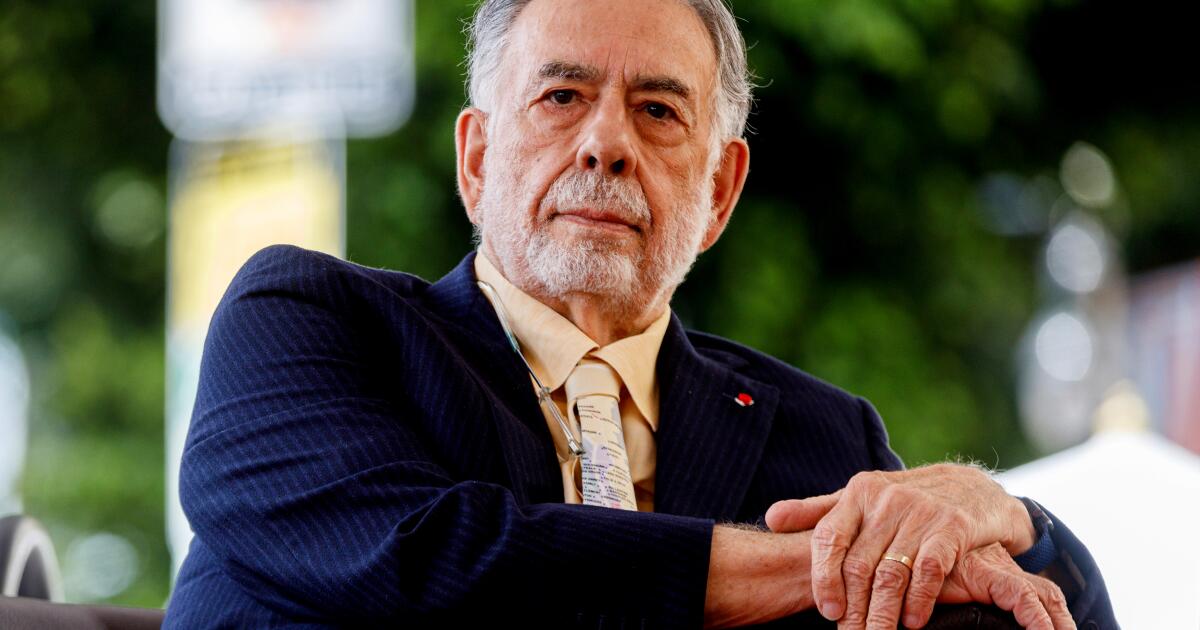
Francis Ford Coppola wants an offer he can’t refuse — on his timepieces.
The Academy Award-winning director is selling seven watches from his personal collection, including his custom F.P. Journe FFC Prototype, estimated to sell for more than $1 million, according to a statement from Phillips, the New York City-based auction house. Phillips will hold the auction on Dec. 6 and 7.
The sale could help stanch losses from last year’s box-office flop “Megalopolis,” which cost over $120 million to make and was largely financed by the 86-year-old director. The movie grossed only $14.3 million worldwide.
The film, Coppola’s first since his 2011 horror movie “Twixt,” premiered at Cannes last year to largely negative reviews. The Times’ Joshua Rothkopf called it a “wildly ambitious, overstuffed city epic.”
At a news conference at Cannes, Coppola discussed the tremendous amount of his own money that he had sunk into the film, saying that he “never cared about money” and that his children “don’t need a fortune.”
Among the Coppola timepieces also going under the hammer are examples from Patek Philippe, Blancpain and IWC.
But the headlining piece is the F.P. Journe FFC Prototype that features a black titanium, human-like hand that resembles a steampunk gauntlet that articulates the hours when the fingers extend or retract.
Francis Ford Coppola’s custom F.P. Journe FFC timepiece uses a single hand to indicate all 12 hours.
(Phillips)
The watch was a collaboration between Coppola and master watchmaker François-Paul Journe that began following a conversation the pair had during a visit he made to the filmmaker’s Inglenook winery in Napa Valley in 2012.
Coppola asked Journe if a human hand had ever been used to mark time. That question sparked a years-long conversation during which the watchmaker grappled with how to indicate the 12 hours of the dial using just five fingers.
Journe found his inspiration in Ambroise Paré, a 16th century French barber surgeon and an innovator of prosthetic limbs in particular, including Le Petit Lorrain, a prosthetic hand made of iron and leather that featured hidden gears and springs enabling the fingers to move, not dissimilar to a watch mechanism.
“Speaking with Francis in 2012 and hearing his idea on the use of a human hand to indicate time inspired me to create a watch I never could have imagined myself. The challenge was formidable — exactly the type of watchmaking project I adore,” said Journe in a statement.
Journe eventually created six prototypes and delivered Coppola’s watch to him in 2021.
“I’m proud to fully support the sale of this watch through Phillips to fund the creation of his artistic masterpieces in filmmaking,” he said.
Coppola first became interested in the watchmaker when he gifted his wife Eleanor an F.P. Journe Chronomètre à Résonance in platinum with a white gold dial for Christmas in 2009, prompting the director to extend an invitation to Journe to visit him at his Napa winery.
Eleanor Coppola, a documentary filmmaker and writer, died in 2024 after 61 years of marriage. Her F.P. Journe timepiece is also part of the auction and is estimated to fetch between $120,000 to $240,000.
-

 New York5 days ago
New York5 days agoVideo: How Mamdani Has Evolved in the Mayoral Race
-

 World1 week ago
World1 week agoIsrael continues deadly Gaza truce breaches as US seeks to strengthen deal
-

 News7 days ago
News7 days agoVideo: Federal Agents Detain Man During New York City Raid
-

 News7 days ago
News7 days agoBooks about race and gender to be returned to school libraries on some military bases
-

 Technology1 week ago
Technology1 week agoAI girlfriend apps leak millions of private chats
-

 Politics1 week ago
Politics1 week agoTrump admin on pace to shatter deportation record by end of first year: ‘Just the beginning’
-

 Business1 week ago
Business1 week agoUnionized baristas want Olympics to drop Starbucks as its ‘official coffee partner’
-

 News1 week ago
News1 week agoTrump news at a glance: president can send national guard to Portland, for now



